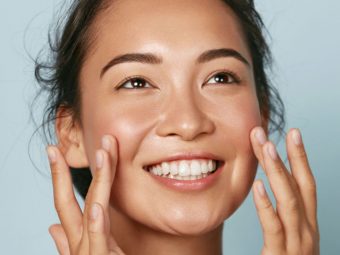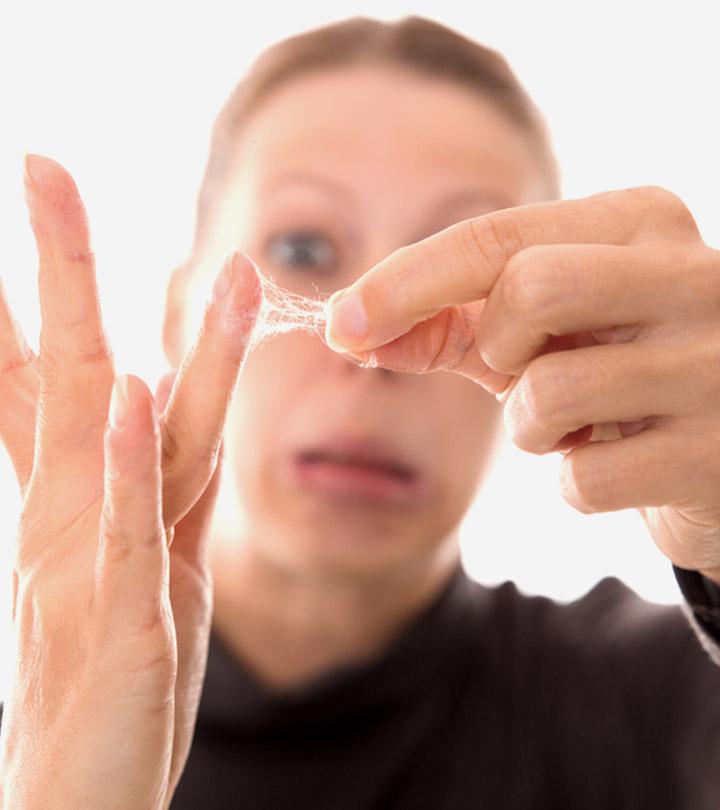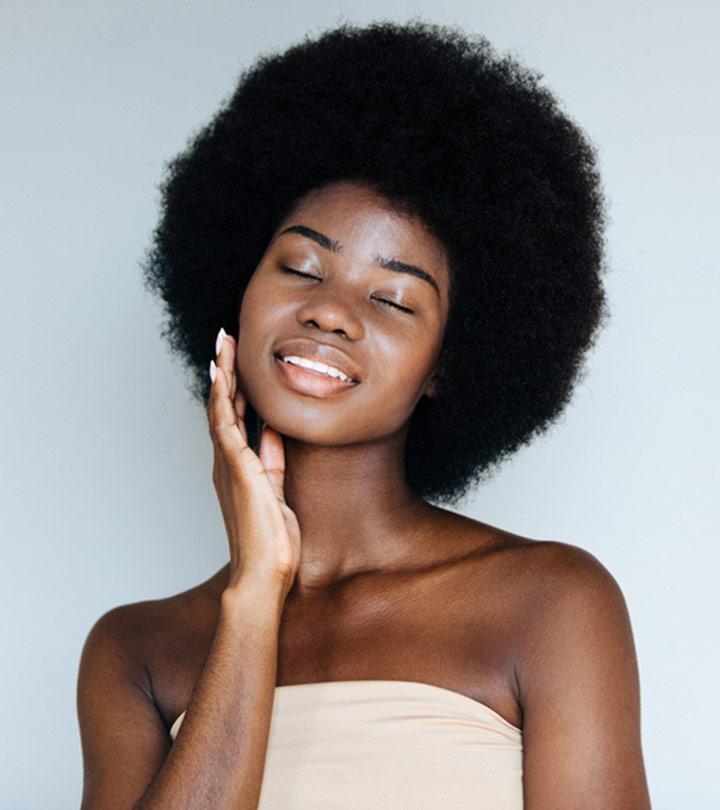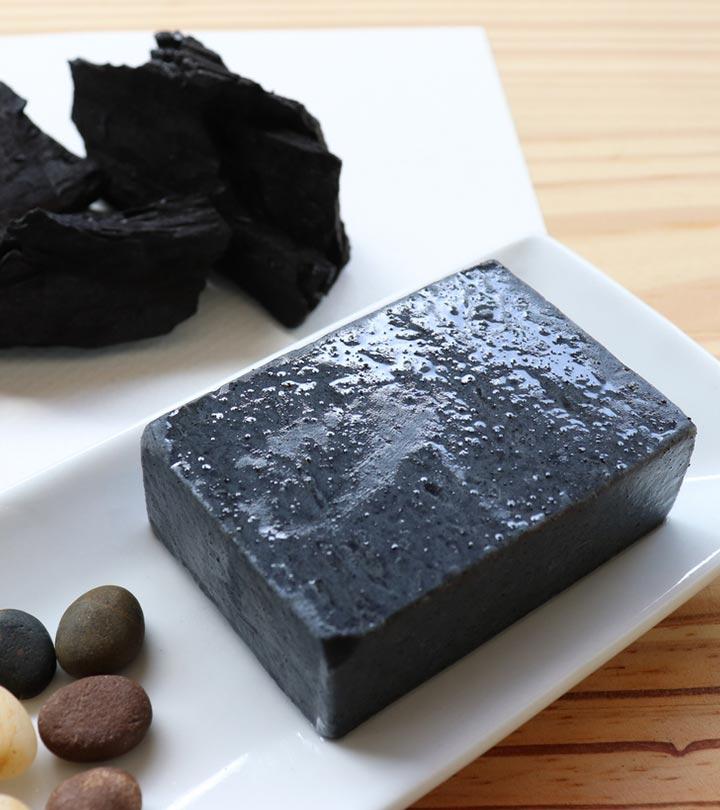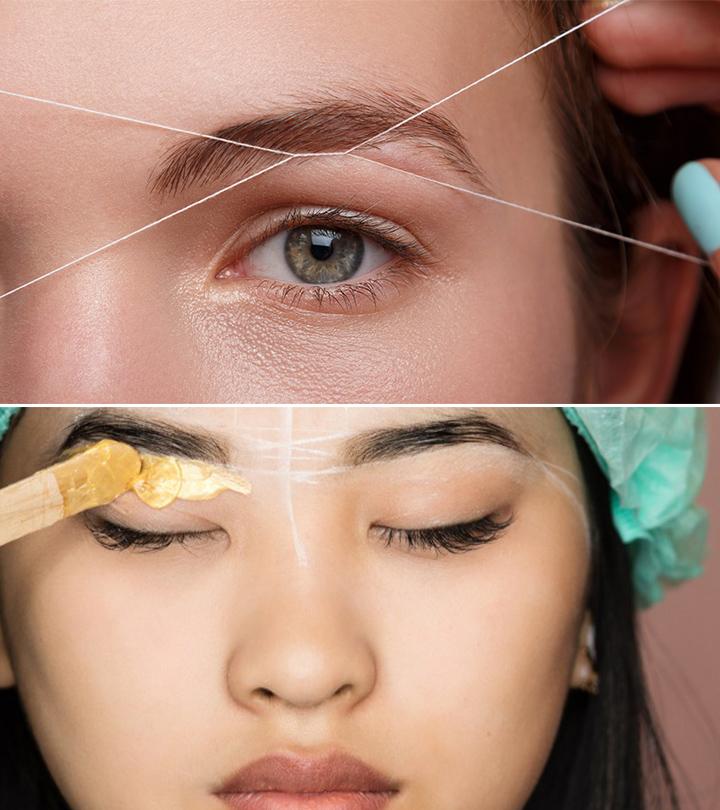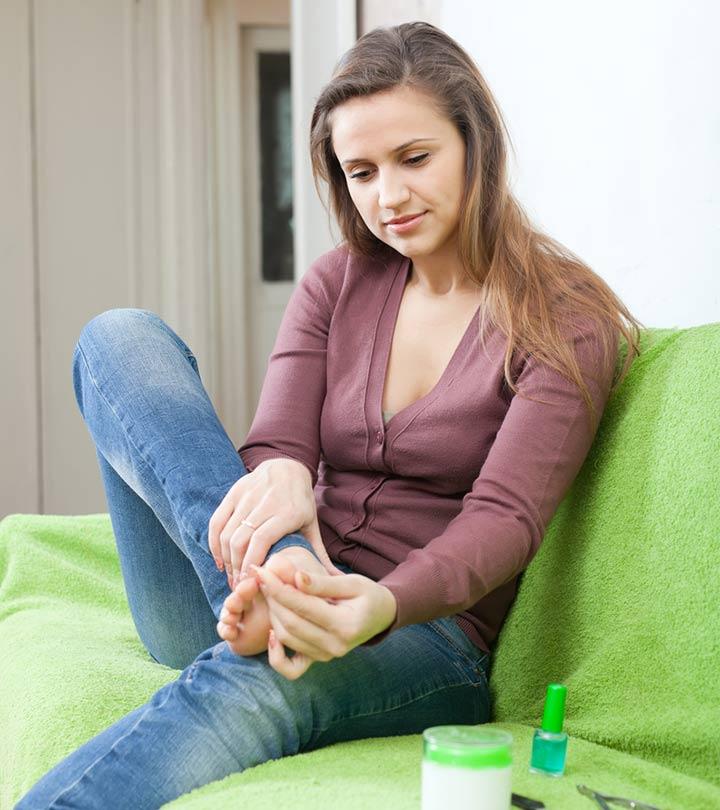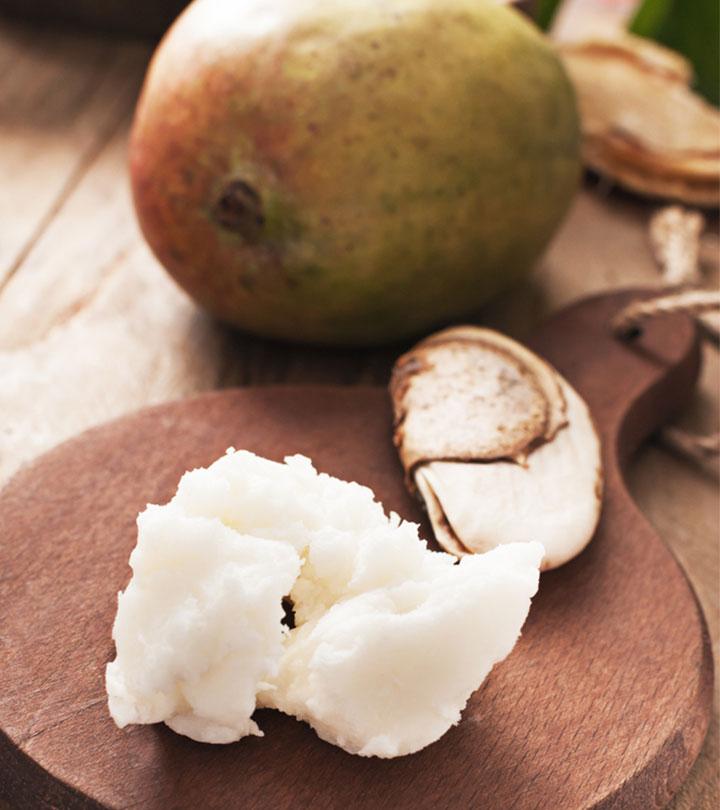Skin Elasticity: What Is It And 10 Ways To Improve It
A proper skincare routine and a healthy lifestyle are the keys to firm and youthful skin.
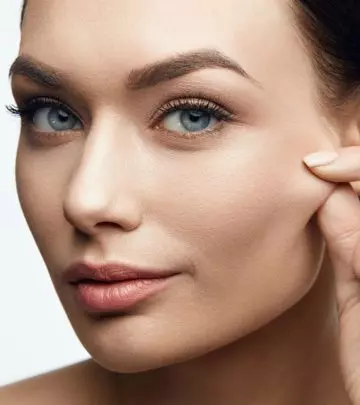
Image: Shutterstock
As you grow older, your skin loses its youthful and plump appearance. But, what causes this? It occurs as a result of the loss of skin elasticity. If you have noticed the appearance of fine lines and wrinkles on your skin, it is an indication that your skin’s elasticity is deteriorating. Fortunately, there is still hope! You can refresh your skin and enhance skin elasticity and suppleness with a little effort and dedication.
Are you interested in regaining your skin’s youthful appearance? There are a few options. Keep reading to learn all about the causes of loss of skin elasticity and several ways to prevent it.
In This Article
What Is Skin Elasticity? Why Is It Important?
Skin elasticity is the ability of your skin to bounce back when it is stretched. The loss of elasticity in your skin is known as elastosis (1).
Your skin can be broadly divided into three main layers. They are:
- The outer layer or epidermis contains skin cells, proteins, and pigment (1).
- The middle layer or dermis contains skin cells, oil glands, hair follicles, nerves, and blood vessels (1).
- The inner layer or the subcutaneous layer contains blood vessels, sweat glands, fat, and hair follicles (1).
Apart from these, each skin layer also contains connective tissue. The connective tissue has collagen fibers that provide support and elastin fibers that grant strength and flexibility to your skin. With age, degeneration occurs in the connective tissue and leads to a decrease in the production of collagen (2). This, in turn, reduces the strength and elasticity of the skin (1).
Your skin needs to retain elasticity as it is this property that makes it appear smooth and youthful. When your skin begins to lose elasticity, it starts sagging, losing firmness, and forming fine lines and wrinkles (3). In other words, your skin begins to look aged, exhausted, and weather-beaten.
To protect your skin from loss of elasticity, you need to know what causes it in the first place.
What Causes Loss Of Skin Elasticity?
Aging is a natural process that impacts the skin in several ways, including a decrease in elasticity (4). But, age is not the only factor that leads to poor skin elasticity. Several other factors also contribute towards the reducing elasticity of the skin. These include environmental factors, hormonal changes, poor nutrition, smoking, genetic makeup, and pollution.
One of the major factors responsible for your skin losing elasticity is the sun. Yes, elastosis is more prominent in those areas of the skin that are more exposed to the sun. A loss of normal skin elasticity due to exposure to the sun is known as solar elastosis (1).
Find out at what age your skin starts losing elasticity in the next section.
At What Age Does Skin Lose Elasticity?
The decrease in skin elasticity is a natural part of aging. This means your skin loses its elasticity gradually over a period of time. In human beings, organs begin to age right from the time a person is born. Since skin is the largest organ in the human body, it follows the same rule. As a person gets old, the skin begins to show prominent signs of aging (5), (6).
Once you reach the age of 20, there is a decrease in the production of collagen in the dermis layer of your skin by about 1% every year. This results in brittle and inelastic skin that eventually leads to sagging and wrinkle formation. In your thirties, the fat cells begin to shrink as moisture transfer from the dermis layer to the epidermis layer slows down. This makes the skin appear thin and dull. When you are in your forties, your cells stop producing collagen. The elastin and collagen fibers become thick and stiff and break down, and your skin loses its elasticity. This causes the appearance of wrinkles and age lines. In your fifties, the skin becomes prone to bruises and damage. This happens as the skin turns dry due to the shrinkage of the sebaceous glands or oil glands. When you reach menopause, your estrogen levels decrease. This causes your skin to become thinner, drier, less toned, and extra sensitive (7).
Extrinsic aging is influenced by environmental factors that can be controlled. If left unchecked, extrinsic aging can cause huge collagen and elastin loss, leaving your skin rough, wrinkled, uneven in tone, and with reduced elasticity (7).
Now, you must be curious to know how to regain elasticity in the skin. Find out in the next section!
10 Natural Ways To Improve Or Restore Skin Elasticity
You can follow these simple tips to restore skin elasticity and maintain the beauty of your skin.
1. Reduce Stress
You need to keep your stress level under check to improve elasticity in the skin. As of now, it is not clear by what process stress affects skin aging. However, research has shown that it contributes to the aging of the skin and decreases its elasticity (8).
2. Get Enough Sleep
When you are sleep-deprived, it causes fine lines and uneven pigmentation to appear on your skin, along with reduced elasticity. So, for improving skin elasticity, make sure to get enough sleep every night (8).
3. Add Vitamin C To Your Diet
Vitamin C has antioxidant properties and can stimulate collagen synthesis. When you include vitamin C in your diet, it helps reduce wrinkles, improve skin appearance, decrease protein fiber damage, and reduce skin roughness (9), (10).
4. Exercise Regularly
The harmful activities of free radicalsi XExtremely unstable and reactive atoms that cause cell damage, resulting in inflammation, diseases, and aging signs. can cause your skin to age. By following a healthy lifestyle and indulging in physical exercise regularly, you can prevent the free radicals from impacting your skin (11).
Judy, a skincare blogger, shared her journey of tightening her facial skin, which involves maintaining a balanced diet and exercising. She has also tried regular massage and skincare products that promote skin elasticity. Overall, she notes, “I engage in physical activity several times a week, such as yoga, walking, or light aerobic exercises. Exercise not only benefits the body but also positively impacts skin firmness (i).”
5. Eat A Balanced Diet
A healthy, balanced diet can help protect your skin and maintain your youthful appearance. Consume lots of fruits and vegetables, which are among the best things to include in a healthy diet (11).
6. Exfoliate Your Skin
With age, your skin loses its cell renewal ability. By regular exfoliation, you can remove the dead skin cells as well as increase the epidermal thickness of your skin. In other words, you can improve skin elasticity (12).
7. Use Raspberry Extract
Red raspberries contain plenty of antioxidant compounds. By using the extract of raspberry, you can protect your skin from several extrinsic damaging factors, including UV rays-induced skin photoagingi XIt refers to the early aging signs, like spots and wrinkles, brought on by persistent exposure to ultraviolet radiation. . The extract serves as a protective barrier for the skin and allows cell regeneration and procollagen synthesis (13).
 Did You Know?
Did You Know?8. Keep Your Body Hydrated
An easy and effective way to maintain the healthy and youthful look of your skin is to drink plenty of water every day. When you drink water, it gets absorbed by the cells in your body and increases the elasticity of your skin (14).
9. Apply Aloe Vera Gel
Aloe vera is generally used to treat burns and wounds. But, you can also use aloe vera gel or extract to reduce facial wrinkles and provide moisturization. Since it stimulates the production of collagen and hyaluronic acid, aloe vera can increase your skin elasticity (15).
10. Drink Coffee

Drinking coffee regularly can protect your skin from oxidative stress-induced senescence (the process by which a cell ages and permanently stops dividing). This simple activity can protect your skin from aging-related disorders and abnormal aging (16). However, drink coffee in moderation as having too much caffeine is not good for your health.
Find out what foods improve skin elasticity in the next section.
What Foods Are Good For Skin Elasticity?
Your daily diet and nutrition can play a key role in keeping your skin healthy and prevent it from aging (17).
- You can boost your skin elasticity by eating foods that are rich in total fat, monounsaturated fat, and saturated fat (18).
- A diet enriched with green and yellow vegetables can help in reducing your wrinkles (18).
- You can increase the intake of green tea to protect your skin from photoaging (11).
- Food items that contain omega-3 fatty acids and vitamins A, B, C, and E in high quantities are also beneficial for skin elasticity (11), (19).
Wondering what herbs promote skin elasticity? Then check out the following section.
Herbs For Skin Elasticity
Several herbs are known for their potential to promote skin elasticity and firmness. Gotu kola, a medicinal plant, is believed to enhance collagen production, thus improving skin elasticity and reducing the appearance of wrinkles (20). Rosemary has antioxidant properties that may help protect the skin from damage caused by free radicals and improve its overall elasticity (21). Additionally, horsetail herb is rich in silica, a mineral that aids in the production of collagen, thereby supporting skin strength and elasticity. A study done on rats found that it could also assist in wound healing by promoting skin regeneration (22). These herbs, when included in a healthy skin care routine and supported by a balanced diet, may help promote and maintain skin elasticity over time.
Apart from eating a healthy diet, you must take other necessary steps to prevent your skin from suffering a loss of elasticity.
How To Prevent Loss Of Skin Elasticity
Some of the lifestyle changes that you can adopt to prevent the loss of skin elasticity are as follows:
- Limit Sun Exposure
When your skin is exposed to UV rays, it can do considerable damage to your skin in the form of premature aging, wrinkling, photoaging, dryness, and impaired pigmentation (23). You can use a broad-spectrum sunscreen to protect your screen against damage from UV rays when stepping out in the sun. Sunglasses and wide-brim hats can offer you added protection (24).
- Apply Moisturizer
If your skin lacks moisture, it loses the ability to repair itself. This can increase the risk of skin damage further. Use a good-quality moisturizer for hydration and to prevent this from happening. It will keep your skin moist and supple (1).
- Quit Smoking
Smoking tobacco can cause premature aging of the skin (25). It can also reduce the rate of collagen synthesis in your skin, making it prone to wrinkles and reduced elasticity (26). By giving up on smoking, you can protect your skin from further damage (27).
- Check Alcohol Consumption
Consumption of alcohol is another factor that can cause facial aging. By limiting your alcohol consumption, you can delay the onset of the symptoms of skin aging (27). This will help you to prevent the loss of skin elasticity.
What can you do if your skin is already suffering from a loss of elasticity? How do you treat it? Find out in the next section.
Best Treatment For Skin Elasticity
There are several treatment options available for reversing or limiting the impact of skin aging and regaining skin elasticity. Here are a few of the treatment options:
- Antioxidants
Antioxidant treatment or taking antioxidant supplements can help to build up the defense of your skin. They can help to neutralize the free radicals and enhance skin elasticity (5), (28).
- Stem Cell Therapy
Transplantation of stem cells can contribute towards skin regeneration during aging. This treatment process can also improve skin volume and quality (5).
 Quick Tip
Quick Tip- Retinoids
Topical application of retinoidsi XA class of drugs that are chemically generated from vitamin A and work to reduce wrinkles and other visible signs of aging. can prevent the degradation of collagen. Retinoids can also help to increase epidermal thickness and slow down skin aging (5).
- Hormone Replacement Therapy
Hormone replacement therapy (HRT) is an effective treatment for slowing down the aging process of the skin. HRT can improve skin elasticity, collagen content, and skin thickness (5).
Many people experience a loss in skin elasticity after losing weight. Find out more about it in the next section.
Skin Elasticity After Weight Loss
When you lose weight, the collagen and elastin fibers in your skin become thin and damaged. Since collagen is responsible for providing strength and firmness to your skin, the elasticity of your skin also suffers as a result of the collagen becoming less dense (29). You can improve the loss of elasticity in such skin by opting for proper treatment.
Now, let find out how to figure out if you have good skin elasticity.
How Do You Know If You Have Good Skin Elasticity?
Are you wondering how to figure out if you have good skin elasticity? You can carry out a simple test to find out:
- Place one of your hands palm-down on a flat surface in a relaxed manner.
- Pinch the skin on the back of your hand with your free hand and hold for five seconds.
- Release your skin and count the seconds your skin takes to flatten out once more.
If your skin snaps back instantly, it indicates good elasticity. If it takes more than a few seconds, it means your skin elasticity is low.
Infographic: 5 Natural Ways To Improve Your Skin Elasticity To Look Young
Maybe after reading this article you stared in the mirror and noticed some wrinkles or fine lines. While aging is something you should embrace, we would like to highlight 5 natural ways you can keep your skin looking youthful. The infographic below focuses on some natural practices you can incorporate into your everyday life to improve your skin’s elasticity. Check it out!

Illustration: StyleCraze Design Team
The elasticity of your skin changes with age. When your skin is stretched, it loses some of its capacity to bounce back over time. While you may not be able to prevent or stop the loss of skin elasticity completely, you can certainly slow it down. By following the easy guidelines above and making a few lifestyle modifications, you can ensure that your skin retains its elasticity and looks firm and youthful. Yes, you can freshen your skin and improve skin elasticity with a little effort and attention.
Frequently Asked Questions
What food item should I avoid to prevent loss of skin elasticity?
Sugar is one of the most common food items that can lead to skin aging and a loss of skin elasticity. So, try to avoid including too much sugar in your diet (30).
Can you reverse sagging skin?
Yes, you may reverse sagging skin with proper treatment and by following a healthy lifestyle. But since it is a natural process, you may not be able to reverse it completely.
Does vitamin E oil help skin elasticity?
Yes. Vitamin E boosts skin firmness and has a positive effect on its elasticity. This potent antioxidant protects the skin from sun damage (31).
Key Takeaways
- Skin elasticity is your skin’s ability to bounce back when stretched too much. Genetics, age, sun, and stress are certain factors that impact skin elasticity.
- From the age of 20, there is a decrease in collagen production by 1% annually, resulting in the skin becoming thin, losing its elasticity, and more susceptible to damage.
- Keeping your stress levels under control, eating a balanced diet, and keeping yourself hydrated are some of the ways to improve skin elasticity.
- You can prevent the loss of skin elasticity by limiting exposure to the sun and using a good moisturizer to keep your skin hydrated and smooth.
Learn about the best treatments for skin tightening in the video below. Discover the latest techniques and products to help you look and feel your best.
Personal Experience: Source
StyleCraze's articles are interwoven with authentic personal narratives that provide depth and resonance to our content. Below are the sources of the personal accounts referenced in this article.
i. 4 Methods for Tightening Facial Skin Based on My Personal Experience!https://xiekai080.medium.com/4-methods-for-tightening-facial-skin-based-on-my-personal-experience-165697772e6e
References
Articles on StyleCraze are backed by verified information from peer-reviewed and academic research papers, reputed organizations, research institutions, and medical associations to ensure accuracy and relevance. Read our editorial policy to learn more.
- Aging changes in skin,
https://medlineplus.gov/ency/article/004014.htm - Age-associated increase of skin fibroblast-derived prostaglandin E2 contributes to reduced collagen levels in elderly human skin,
https://www.ncbi.nlm.nih.gov/pmc/articles/PMC4537382/ - Loss of skin elasticity precedes to rapid increase of wrinkle levels,
https://pubmed.ncbi.nlm.nih.gov/17576050/ - Influence of age and regional differences on skin elasticity as measured by the Cutometer,
https://pubmed.ncbi.nlm.nih.gov/19159383/ - Fighting against Skin Aging,
https://www.ncbi.nlm.nih.gov/pmc/articles/PMC6047276/ - The skin is the body’s largest organ,
https://pubmed.ncbi.nlm.nih.gov/21087182/#:~:text=The%20skin%20is%20the%20body’s%20largest%20organ - Why Does Your Skin Age?,
https://sites.dartmouth.edu/dujs/2013/01/28/why-does-your-skin-age/ - Brain-Skin Connection: Stress, Inflammation and Skin Aging,
https://www.ncbi.nlm.nih.gov/pmc/articles/PMC4082169/ - The Roles of Vitamin C in Skin Health,
https://www.ncbi.nlm.nih.gov/pmc/articles/PMC5579659/#:~:text=In%20addition%20to%20stabilising%20the,fibroblasts%20%5B78%2C83%5D. - Vitamin C and Skin Health,
https://lpi.oregonstate.edu/mic/health-disease/skin-health/vitamin-C - Discovering the link between nutrition and skin aging,
https://www.ncbi.nlm.nih.gov/pmc/articles/PMC3583891/ - The effects of an estrogen and glycolic acid cream on the facial skin of postmenopausal women: a randomized histologic study,
https://pubmed.ncbi.nlm.nih.gov/12839261/ - Rubus idaeus L. (red raspberry) blocks UVB-induced MMP production and promotes type I procollagen synthesis via inhibition of MAPK/AP-1, NF-κβ and stimulation of TGF-β/Smad, Nrf2 in normal human dermal fibroblasts,
https://pubmed.ncbi.nlm.nih.gov/29966991/ - Water health benefits,
https://www.canr.msu.edu/news/water_health_benefits - Effects of plant sterols derived from Aloe vera gel on human dermal fibroblasts in vitro and on skin condition in Japanese women,
https://www.ncbi.nlm.nih.gov/pmc/articles/PMC4345938/ - Caffeine Protects Skin from Oxidative Stress-Induced Senescence through the Activation of Autophagy,
https://www.ncbi.nlm.nih.gov/pmc/articles/PMC6276298/ - Diet and Skin AgingFrom the Perspective of Food Nutrition,
https://www.ncbi.nlm.nih.gov/pmc/articles/PMC7146365/ - Association of dietary fat, vegetables and antioxidant micronutrients with skin ageing in Japanese women,
https://pubmed.ncbi.nlm.nih.gov/20085665/ - Essential Fatty Acids and Skin Health,
https://lpi.oregonstate.edu/mic/health-disease/skin-health/essential-fatty-acids - Centella asiatica in cosmetology
https://www.ncbi.nlm.nih.gov/pmc/articles/PMC3834700/ - Rosemary Essential Oil-Loaded Lipid Nanoparticles: In Vivo Topical Activity from Gel Vehicles
https://www.ncbi.nlm.nih.gov/pmc/articles/PMC5750654/ - Effects of Equisetum arvense Ointment on Dermal Wound Healing in Rats
https://pubmed.ncbi.nlm.nih.gov/25901493/ - Ultraviolet Radiation, Aging and the Skin: Prevention of Damage by Topical cAMP Manipulation,
https://www.ncbi.nlm.nih.gov/pmc/articles/PMC4344124/ - Skin Cancer,
https://www.cdc.gov/cancer/skin/basic_info/sun-safety.htm - Tobacco smoke causes premature skin aging,
https://pubmed.ncbi.nlm.nih.gov/17951030/ - Smoking affects collagen synthesis and extracellular matrix turnover in human skin,
https://pubmed.ncbi.nlm.nih.gov/11966688/ - Impact of Smoking and Alcohol Use on Facial Aging in Women: Results of a Large Multinational, Multiracial, Cross-sectional Survey,
https://www.ncbi.nlm.nih.gov/pmc/articles/PMC6715121/ - Antioxidants in dermatology,
https://www.ncbi.nlm.nih.gov/pmc/articles/PMC5514576/ - Image analyzer study of the skin in patients with morbid obesity and massive weight loss,
https://pubmed.ncbi.nlm.nih.gov/25671051/ - Nutrition and aging skin: sugar and glycation,
https://pubmed.ncbi.nlm.nih.gov/20620757/ - Bioactive Compounds for Skin Health: A Review
https://www.ncbi.nlm.nih.gov/pmc/articles/PMC7827176/
- Aging changes in skin,


















